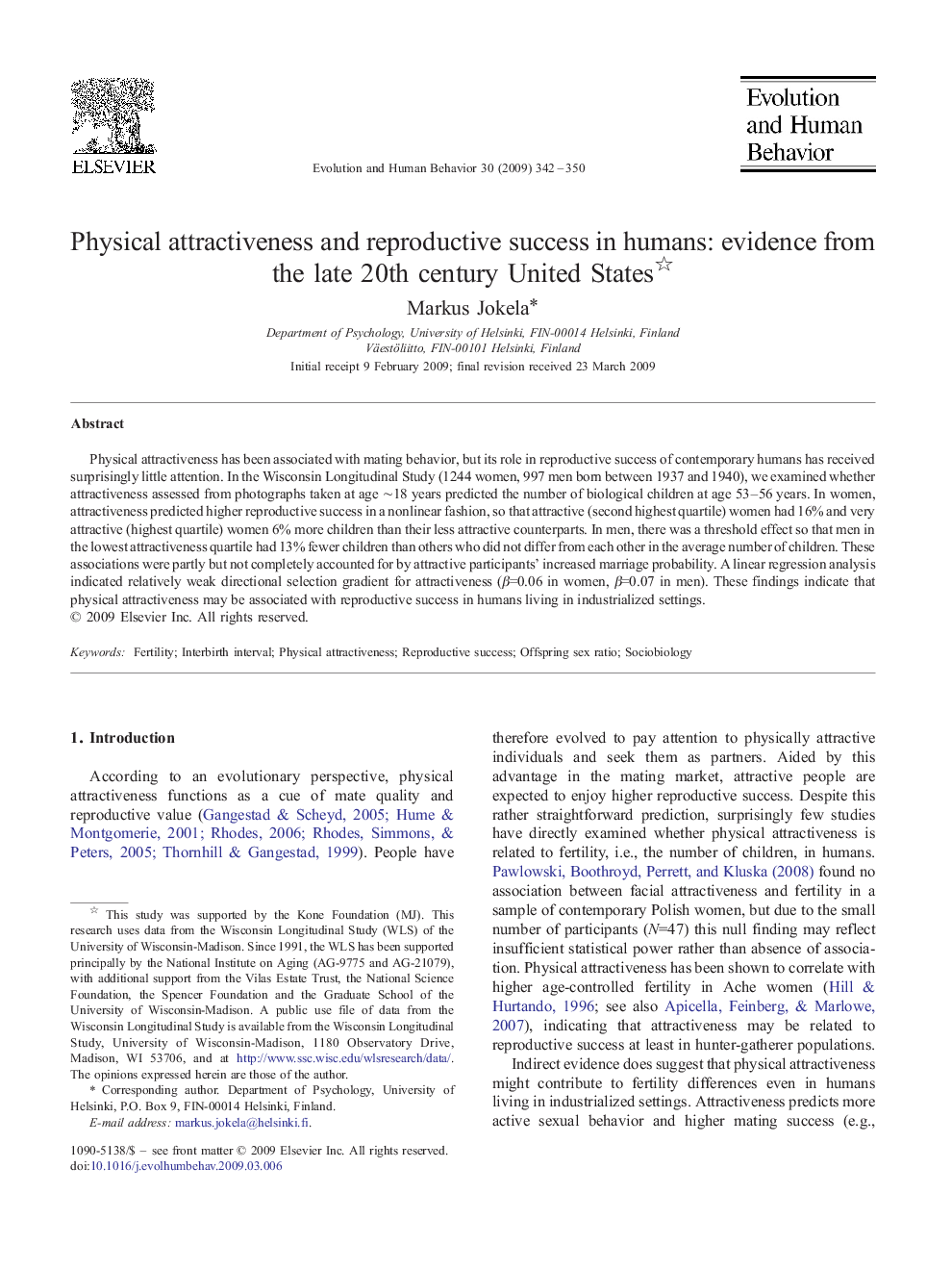| Article ID | Journal | Published Year | Pages | File Type |
|---|---|---|---|---|
| 943511 | Evolution and Human Behavior | 2009 | 9 Pages |
Physical attractiveness has been associated with mating behavior, but its role in reproductive success of contemporary humans has received surprisingly little attention. In the Wisconsin Longitudinal Study (1244 women, 997 men born between 1937 and 1940), we examined whether attractiveness assessed from photographs taken at age ∼18 years predicted the number of biological children at age 53–56 years. In women, attractiveness predicted higher reproductive success in a nonlinear fashion, so that attractive (second highest quartile) women had 16% and very attractive (highest quartile) women 6% more children than their less attractive counterparts. In men, there was a threshold effect so that men in the lowest attractiveness quartile had 13% fewer children than others who did not differ from each other in the average number of children. These associations were partly but not completely accounted for by attractive participants' increased marriage probability. A linear regression analysis indicated relatively weak directional selection gradient for attractiveness (β=0.06 in women, β=0.07 in men). These findings indicate that physical attractiveness may be associated with reproductive success in humans living in industrialized settings.
